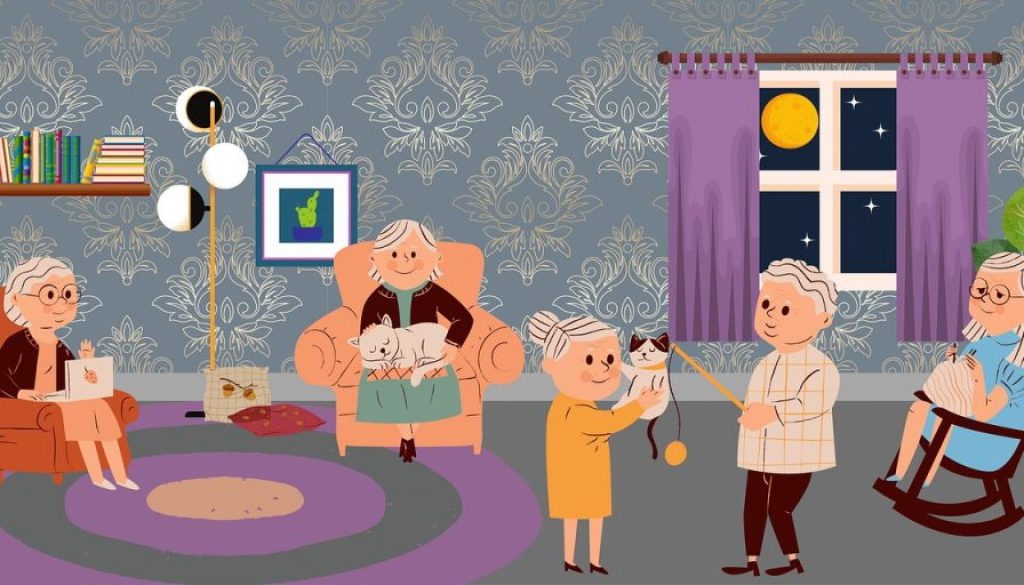5 Caregiver Tips BEFORE Moving to Assisted Living
By Maureen Rulison
Caregiver Support and Resources, LLC
Moving a loved one into assisted living (or any other type of advanced care) is a HUGE change that comes with stress for everyone involved. For the person moving. For close family and friends. For the systems and services that must be coordinated for a smooth transition.
Even if you’re prepared for it.
Even if it was part of your loved one’s strong life-care plan all along. Here at Caregiver Support and Resources, LLC, we’re there for all of it. To help this process, check out these 5 caregiver tips on what should be done BEFORE moving to assisted living.
Is Moving to Assisted Living Part of the Plan? Let’s Prepare
These preparations will help a loved one moving to assisted living (as well as the entire care-partner team) to achieve all the big and small things on the checklist before the move. They’ll also help to envision difficulties that may come.
1. Prepare Medication and Treatment Plans
Most folks in assisted living, nursing care, memory care, etc., have medications and treatments for a variety of conditions. (My Brian has so many meds for his Alzheimer’s and vascular dementia, in addition to heart problems and diabetes, that I sometimes joke that I spend most of my free time sorting pills! As his life partner/care partner, it’s a labor of love.)
It’s very important before the move to document ALL of these medications and treatments (name, dosage, frequency, etc.). Some care partners who are natural organizers may have a living document to update info in real time. But for so many, it can be difficult to keep up with. But even writing it all down in a notebook is better than nothing.
Of course, during the move, make sure your loved one stays on a consistent schedule. Keeping routine throughout will help them feel more comfortable as their world changes around them. It’s also helpful to make sure the primary doctor is in contact with the care facility to be “on the same page,” to continue the plan as it stands, and to be receptive to necessary changes.
2. The Cost of Assisted Living
Assisted living and other advanced and extended care facilities are outrageously expensive without long-term care insurance. So one of the most important steps – hopefully years prior to moving to assisted living – is how costs will be covered.
Medicaid eligibility varies by state, but in general it’s a health care program to help people having low incomes and/or assets. It pays when private insurance doesn’t cover the cost of facility living and care. Former military service members can receive help from the Department of Veteran Affairs. Medicaid will cover the medical costs of care in an assisted living facility, but not room and Board. The VA Aid & Attendance Program does not stipulate to which part of the cost of an assisted living facility the money is applied. There are VA programs in which the facility is contracted with the VA and will cover the entire cost.
Now, the point of such government programs is to help people who could not otherwise afford care. Does that mean your loved one has to be “poor”? Not at all. They simply ensure that people entering care do not have the means to offset their own care costs first. Your loved one may transfer wealth and assets to other family or friends – but beware the 5-year Medicaid lookback period for uncompensated asset transfers and other rules governing spousal income and assets. The VA also has a 3-year look back period for uncompensated transfers of assets.
3. Visitation & Family Care
When a loved one enters a care facility, being involved shouldn’t stop. Unfortunately, I’ve seen too many people moving in and rarely (or never) seeing their loved ones again.
So be involved! Visit. Bring in meals. Spend quality time. You may be entrusting care to professionals, but care partners can still be an important part of their loved one’s lives and should still be responsible in advocating for their care.
You know if they’re comfortable hanging out with fellow residents (hearts, shuffleboard or Wii bowling, anyone?). You also know when family alone is the best form of socialization. Of course, being there could also offer the best of both worlds – to meet more friends with you by their side for reassurance. You probably won’t know – months or even years in advance – how schedules will affect frequent visits. But at least acknowledge that regular involvement will someday be expected.
It’s worth noting that care partners, too, can take time to adapt to someone moving to assisted living. Stay strong! This plan was considered well ahead of time because everyone knows it’s the right fit.
4. Honor the Spirit
Moving your loved one into a new space can mean downsizing some belongings. This can be so hard – letting go. Furniture, clothing, knick-knacks, photographs and the like all hold sentimental value. But unfortunately, it can’t all come with them.
So let’s honor their spirit by planning ahead for what goes and stays. Which photographs spark the happiest memories? Do they have a cherished quilt, music box or even a diploma that must be with them? Their new environment is their new home. Take time to make it a home by learning what your loved one really wants and needs.
Family heirlooms and prized possessions can find new homes until they’re passed down to future generations. Other items may wait in storage to await a decision. Some things must be sold. (Helpful hint: the Facebook Marketplace is a great 21st-century tool for downsizing.)
Let’s not forget, honoring the spirit also means honoring their spiritual life. Folks of all faith belief systems need spiritual fulfillment – on their terms. With our nonprofit We Are Dementia Strong, we advocate often for dementia-inclusive faith communities that make earnest efforts toward accommodating persons living with dementia and their care partners. This compassion must be extended to people of ALL conditions and cognitive abilities. If your loved one’s spiritual needs aren’t currently accessible in their long-term care facility, mandate that such services and resources be provided immediately.
5. Build a Supportive Care-Partner Team
You may have been the primary care partner for years. But hopefully you’ve built a supportive care-partner team before moving to assisted living.
Now, some individuals aren’t fortunate enough to have large families and committed friends. (This always reminds me to count my blessings.) Person-centered care requires the individual to be at the center of a circle of care partners including everyone available – from spouses and grandchildren to doctors and financial experts.
Nurture relationships and establish responsibilities before the move. If comfort is the goal, what better way than to move in with love and support?
Preparation: Moving to Assisted Living Doesn’t Have to be Overwhelming
Moving to assisted living (or advanced nursing, memory care, etc.) can be difficult, but try to see this as a new beginning for your loved one. It’s a new home for new experiences (and hopefully so many supporters working hard to make sure your loved one has A LIFE WORTH LIVING).
Take these caregiver tips to help ease the stress of change! If you need help, contact me at maureen@caregiversupportandresources.com.




